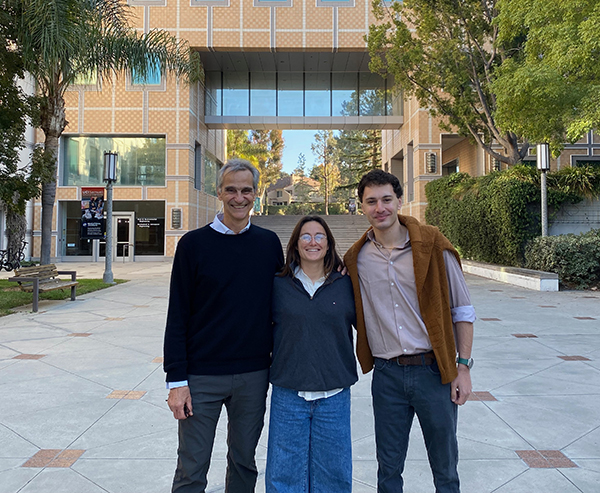UCI Researchers Create Framework to Better Understand Energy-Efficient Control Strategies

Dec. 10, 2024 - UC Irvine mechanical and aerospace engineering researchers are investigating fundamental energy bounds for systems modeled by Langevin dynamics. These models provide a powerful theoretical framework for understanding the behavior of far-from-equilibrium systems. These are systems that are subject to both deterministic and random forces and are actively exchanging energy with their surroundings. They cover a wide range of phenomena including diffusion processes, protein folding, polymer dynamics, noisy circuits and many others.
The UCI team has developed a universal framework that can be used to derive fundamental thermodynamic bounds on the transition speed of such Langevin systems. The new insights have the potential to impact energy-efficient technologies, nanoscale engines and molecular machines, and to address challenges in applications where rapid yet stable transitions are critical, such as in drug delivery systems or quantum computing. By quantifying maximal speed of transition, their work opens new possibilities for optimizing performance across a range of advanced applications. UCI mechanical and aerospace engineering doctoral student Ralph Sabbagh, postdoctoral fellow Olga Movilla Miangolarra and Distinguished Professor Tryphon Georgiou published their work in Physical Review Research.
Georgiou notes that Sabbagh has an exceptional ability to tackle complex problems at the intersection of thermodynamics and stochastic control, resolving and bringing clarity to some of the most challenging questions in the field. "His work uncovered the interplay between irreversible and reversible forces in Langevin systems, providing insights that not only deepen our theoretical understanding but also hold a great potential for advancing energy-efficient technologies and improving system designs across various disciplines," Georgiou said.
Their significant finding was to recognize that energetic costs associated with entropy production alone – quantities they termed irreversible action – are not enough to characterize limits on the transition speed of a general Langevin system. A dual quantity, termed reversible action, must be considered to fully realize such a characterization.
Specifically, the researchers proposed a framework that explores the extent to which the intimate connection between irreversibility, thermodynamic length and transition speed, which is well-established when dissipative effects are dominant, breaks down for more general dynamics. The nuanced picture they present suggests that entropy production alone is not the main obstacle that curtails the speed of transition, and the inclusion of reversible effects in the system cannot be avoided. They illustrated their results by studying the dynamics of underdamped Brownian particles and noisy RLC (resistor, inductor capacitor) electrical circuits.
"Including inertial effects and studying flows in phase space is essential, especially when modeling velocity-dependent forces, as it reveals a more complete picture of the underlying dynamics and limits on transition speeds," said Sabbagh, first author of the paper. "It is tantalizing to observe similarities between flows in phase space and corresponding behaviors in quantum mechanics, suggesting potential new insights into energy-efficient control strategies.”
A deeper understanding of these phase-space flows could not only advance nanoscale technologies like molecular machines but also illuminate the mechanisms behind complex biological processes such as protein folding and enzymatic reactions.
The research was supported by the National Science Foundation and by the Air Force Office of Scientific Research.
– Lori Brandt
